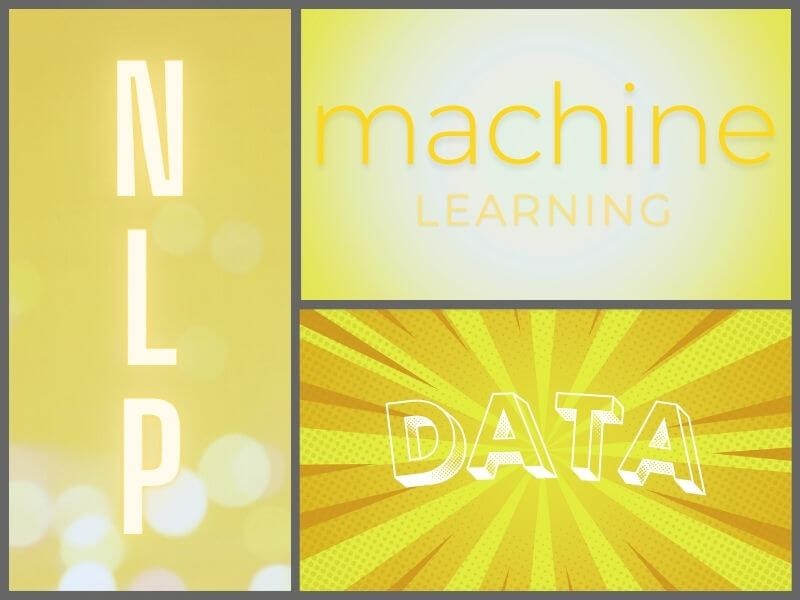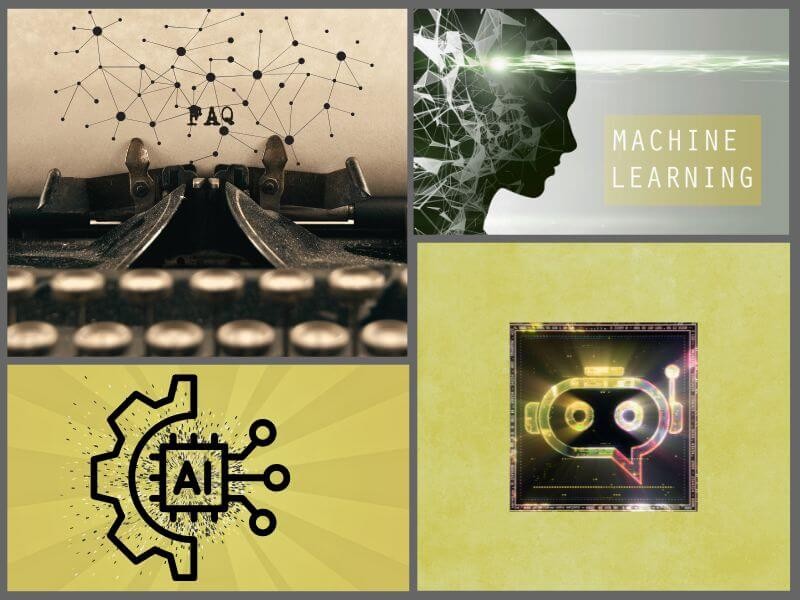
True, intuition is sometimes irreplaceable... So are knowledge and experience. However, artificial intelligence helps eliminate guessing, allowing you to act based on data, especially in marketing.
Artificial intelligence has been a hot topic for some time now. Some fear it, some don't understand it, and some use it extensively.
Some use it so imperceptibly that you won't even know it, while others... It becomes quite clear where and in what ways the "robot" got its fingers involved.
Artificial intelligence in marketing is defined as the use of technologies that simulate human intelligence to improve marketing processes.
Too complicated?
AI is a technology that makes use of data, machine learning, and natural language processing.
This refers to how you can effectively target, customise, and optimise your marketing campaigns.
AI in marketing is not a new concept, no matter how much we think so.
The development of technology and the exponential increase in the amount of data have led to the fact that today the application of AI is almost inevitable.
The use of recommendation systems, like those introduced by Amazon, marked the beginnings of AI in marketing, but today's possibilities are far more expansive...
AI has come a long way from being just a futuristic idea; today, it’s an indispensable tool. For some, at least.
Early AI in marketing was only capable of basic automation, such as simple chatbots that answered FAQs and scheduled emails.
Today, AI is capable of performing complex tasks such as audience segmentation, content personalisation, and even predicting customer behaviours.
Thanks to advances in machine learning and deep learning, AI can analyse complex data patterns, anticipate user's needs, and even help create relevant content.
This allows marketing experts to go beyond generic strategies and create targeted approaches that resonate deeply with each customer.
Examples of AI evolution in marketing:

Machine learning, natural language processing (NLP), and data analytics are the pillars of AI in marketing.
Machine learning enables systems to learn from data over time, which is essential for accurate predictions and trend analysis.
Platforms like Google Ads use machine learning to optimise ad placements by targeting audiences based on real-time engagement.
Natural language processing (NLP) allows computers to interpret and generate human language, making it easier to automate customer service, chatbots, and even content creation.
Chatbots powered by NLP provide quick, conversational responses, creating a smoother customer service experience.
Data analytics processes raw information to offer insights into customer preferences, campaign effectiveness, and market trends.
AI-driven analytics tools assess campaign metrics in real time, helping you adjust strategies for better results.
The worst thing you can do is use generic messages that fail to connect with consumers on a personal level.
AI-driven marketing, however, capitalizes on data to deliver tailored messages that resonate with individuals' preferences and behaviors.
By predicting what customers need and delivering it when they’re most receptive, AI enables a level of personalisation that traditional methods can’t match.
Examples of AI in personalised marketing:

Today, people expect brands to understand what they really want and need.
With AI, you can meet these expectations by analysing past purchases, browsing habits, and demographic data and delivering content, offers, and recommendations tailored to each user.
This kind of personalisation builds trust, making customers feel valued and understood. Services like Netflix, which recommends shows based on viewing history, and Amazon, which suggests items based on previous purchases, are the best examples of how AI plays a big part in creating excellent experiences.
Examples of AI-driven personalization:
AI’s ability to process vast datasets can help you make precise, data-backed decisions instead of relying on guessing.
By analysing customer behaviour, campaign performance, and market trends, AI reduces human errsor and enhances targeting.
With real-time information, you can optimise your campaigns, improving both budget efficiency and customer satisfaction.
This data-driven approach ensures that marketing budget is spent effectively and helps you zero in on strategies that truly resonate with your audience.
Examples of AI-enabled data analysis in marketing:

AI-powered automation streamlines repetitive marketing tasks, freeing up your time to focus on strategic planning and creativity.
From email marketing and social media posts to lead nurturing and customer segmentation, AI handles these processes with precision, consistency, and optimal timing.
Automation helps you deliver the right message at the right time, reducing human error, maximising engagement, and boosting campaign efficiency.
Examples of AI-driven automation:
AI-driven personalisation tools use data like browsing history, past purchases, and product interactions to recommend content and products uniquely suited to each user.
With personalised landing pages, targeted email campaigns, and dynamic product recommendations, you can create a journey that feels tailor-made to your audience, enhancing engagement and building loyalty.
Examples of AI personalisation tools:
AI chatbots have transformed customer service by providing instant, 24/7 responses to user enquiries.
These bots can handle everything from simple FAQs to more complex support issues, all while learning and adapting over time.
Not only do AI chatbots boost customer satisfaction by providing immediate assistance, but they also free up your employees to focus on high-value interactions, improving efficiency.
Examples of AI chatbots:
AI's role in content creation is growing, helping in generating ideas, drafting articles, and creating social media posts.
By analysing popular topics, audience interests, and keyword trends, AI can suggest relevant content ideas and optimise material for search engines.
While it doesn’t replace human creativity, AI accelerates the content planning and production process, enabling making of quality content at scale.
Examples of AI for content creation:

While it seems as though AI can do it all, it’s important to maintain human interaction, especially in customer service.
Consumers value genuine, empathetic communication, which is challenging for AI alone to replicate—and that's another obstacle.
You should use AI to support, not replace, the human element, so whatever you use it for feels authentic.
With AI, your marketing gains tools to enhance personalisation, anticipate customer needs, and streamline repetitive tasks.
By using AI strategically, you can stay competitive, deliver experiences that resonate, and achieve measurable results.
As AI advances, look into integrating it thoughtfully to be best prepared to meet the evolving demands of “digital” customers.

AI, or Artificial Intelligence, is a type of technology that allows machines to do things that would normally need human intelligence, like understanding speech, making decisions, and recognizing images.
Think of it as giving computers a "smart" capability, so they can help with tasks that would usually need human thinking. Some AI systems follow simple rules, while others can learn and improve as they get more information.
Machine Learning (ML) is a branch of AI that teaches computers to learn from data, so they can identify patterns and make decisions without needing to be programmed for every little thing.
ML is used in everyday tech, like recommending movies, filtering spam emails, and recognizing faces in photos. Over time, ML systems get better as they learn from more data.
Deep Learning is a type of machine learning that uses structures called neural networks, which are somewhat like the human brain. These networks have many "layers" that help computers understand complex data, like images or speech.
Deep learning is behind advanced tech like self-driving cars, facial recognition, and language translation because it can pick up on complex patterns in big sets of data.
Natural Language Processing (NLP) is a part of AI that focuses on helping computers understand and respond to human language. This includes text and speech.
NLP is what powers chatbots, voice assistants (like Siri and Alexa), and tools that analyze emotions in reviews or comments. It combines language rules and machine learning so computers can interact in a way that feels more natural to us.
A chatbot is an AI tool that can have a conversation with you, often through text or voice. Chatbots can answer questions, provide customer support, and help with tasks like booking appointments.
Advanced chatbots use NLP to better understand what you’re asking and to respond more accurately, making the conversation feel more human-like and helpful.